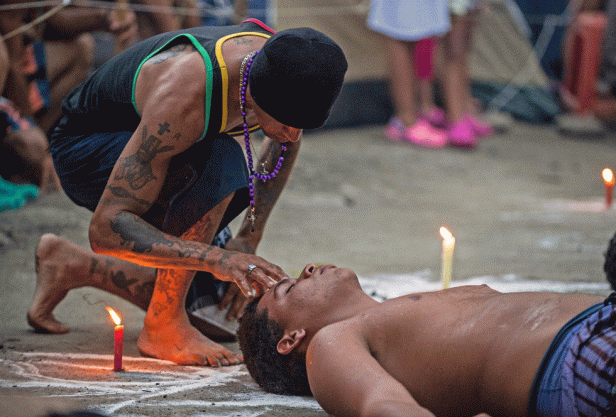SANTERIA AND WITCHCRAFT IN VENEZUELA
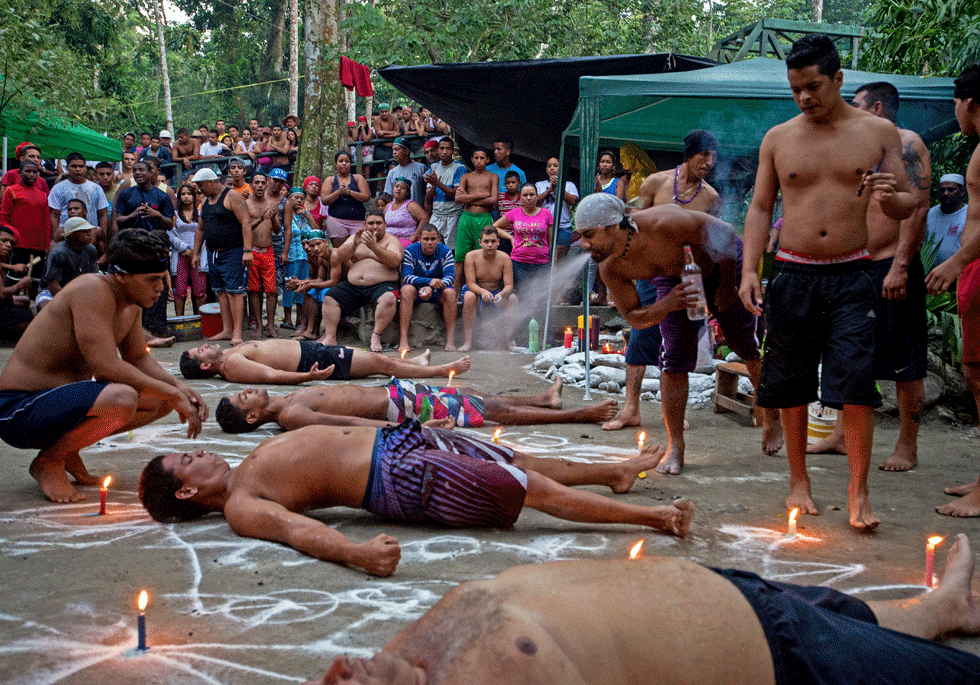
Santería is a religion of Caribbean origin that specifically mixes both African and Christian rites in which the procecerous of South American independence, the Liberator Simon Bolivar, is venerated among other deities.
In the streets and in the markets the santeros and sorcerers offer statuettes and in recent times are offering idols of criminals or "malandros" who have been assigned characters of veneration or divine worship through practitioners of sorcery and occultism within Venezuela.
There are statues 25 to 30 centimetres high, and representative images of many of these statues are statues that are armed with firearms or white weapons.
These give an appearance to represent spirits that the santeros attribute to those who seek forgiveness of all their sins warning many young people that crime must be somewhat averted, helps the condemned out of prison, and cure drug addiction; they are therefore considered heroes and protect neighborhoods if asked for help and protection.
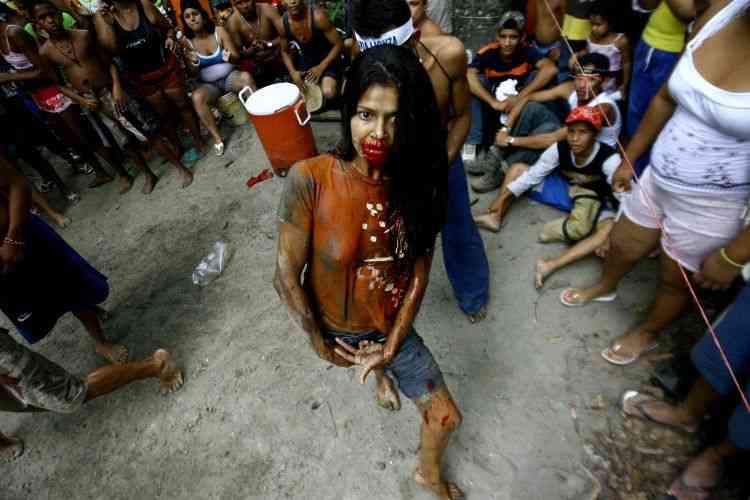
All spirits within witchcraft in Venezuela are part of the magic cult of the adored "Maria Lienza" which is a Venezuelan variant of santeria, a religion that emerged in Cuba that mixes the religion of Catholicism with the Yoruba traditions that slaves brought from Africa. She is depicted as an indigenous woman with an image very similar to the Virgin Mary and presides over other "cuts" or sets of spirits.
His devotees belong to all social classes, but above all to the poor and helpless. Hundreds of thousands of faithful believers followers travel each year to the place that, according to tradition, was home to María Lionza on the mountain of Sorte, located in the state Yaracuy, about three hundred kilometers from Caracas.
When Castro came to power in 1959, an impressive number of refugees and exiles came to Venezuela from Cuba, thousands of Cuban doctors and officials brought their popular beliefs, where they believe those rituals are capable of solving sentimental problems and curing all pain. Some even believe they offer divine protection against criminals in Venezuela.
Thousands of groups of santeros or sorcerers have begun to announce their predictions, and magic influences in newspapers and on the Internet. Santeria has grown in popularity and they perform this cult spiritually to large masses. In this activity the Yoruba religious of Asoifa reject the commercial practices of some santeros, stating that followers of worship should not be announced and must have "by the norm of life humility, honor, brotherhood and honesty ahead'.
In Venezuela, which is a country where nine out of ten people say and claim to be Catholic, santeria and spiritualism are gaining more and more adherents and practitioners of dark white magic.
Some general estimates have claimed that many of the followers of these cults are reaching about a 30% of the nearly 28 million Venezuelans. Recently Venezuelans are turning to witchcraft to cope with socialism and economic crisis. [1]
On other occasions, also many sources claim that half of the population practices, in some way or another, whether it is spiritualism or santeria.
Santería is definitely a system of different cults that combine various elements of different beliefs and practices.
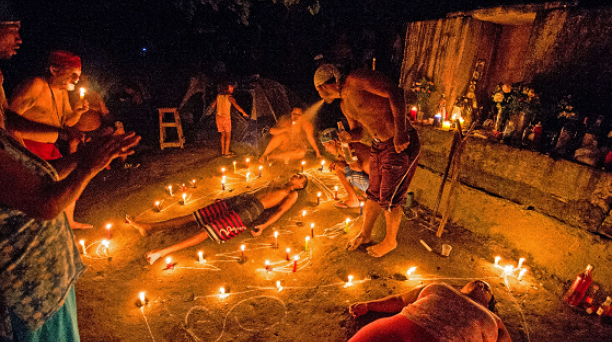
It is part of the so-called religious syncretism, which has in Haitian voodoo one of its main representations and practices.
Spiritualism in Venezuela gives the possibility to communicate with the spirits of the dead through a medium or person who is the way or matter for astral communication.
The Yoruba religion and mythology that are native to East Africa have managed to influence the emergence of new cults in Latin America.
Many of the Yoruba ethnic groups that came centuries ago as slaves to America brought their religion with them and so in different countries were shaping religious expressions.
The growing popularity of santeria is evidenced by the proliferation of shops in which small animals are slaughtered and sold for evil purposes and rituals. The different rites of initiation, divination and magic are generally preserved in the houses of believers, and that is where they have and reserve their places of rituals.
It is known that: "Santeria is booming because there are many people who, when they are in need of help, ask the higher forces for their support to overcome many problems", believers dressed in white who always come to the Catholic Church to worship Obatalá, mother of the Yoruba gods, who for centuries is represented by the Virgin of Las Mercedes. The Catholic Church objects to worship.
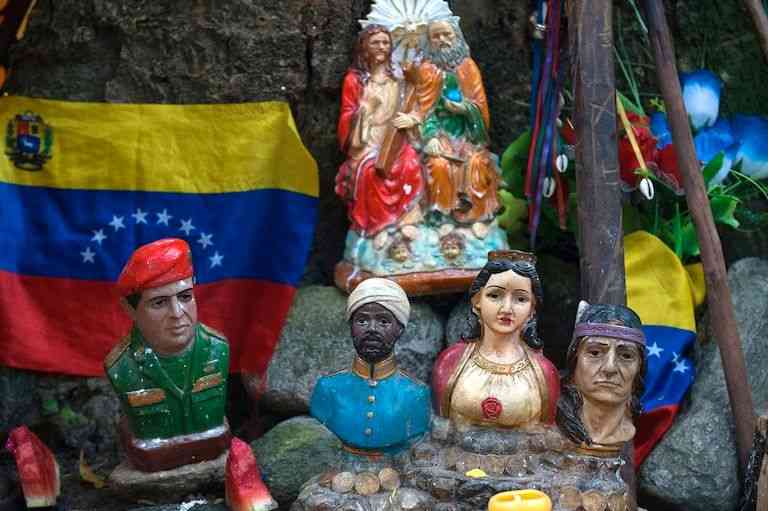
Some believers specifically come to a deep knowledge within the santeria, in order to obtain many healing powers that they believe are granted by the gods, through different rituals such as the sacrifice of animals or as the offerings to cleanse the spirit, many people pay large and huge sums in order to become babalaws or spiritual priests within witchcraft. Santeria attracts many people for many positive reasons and purposes, but unfortunately there are also bad people, who get in because they think that they can be immortal or invincible against their enemies.
The practices of black magic, including those known as 'paleros', are responsible for collecting bones in different cemeteries and as part of a ritual in which they seal "a covenant" with a dead man, who according to belief is mutually beneficial to both. Some paleros offer a lot of money for a skull, since the human skull is of great power in witchcraft and its rituals practiced.
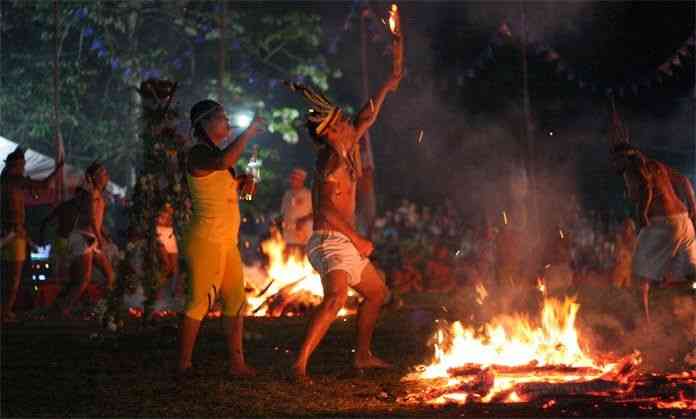
In this religion, it is believed in a higher spirit that is called Olodumare, and in the existence of many spirits that are passed away called "orichas", which possess a divine character and superior to other deities, which are the deities that govern the world, and which must be worshipped and worshipped, in order to attain what is desired or desired.
Santeria in Venezuela has become famous for its magic and its quantity of beneficial rituals, this magic is based on a lot of knowledge of the mysterious orishas, and how to interact with them to improve the lives of the people who come to the santeros seeking the help of the orishas and deities.
Special communication in rituals from humans and practitioners, between orishas and humans are achieved through different ways:
- Prayers
- Rites and rituals
- Prayers
- Divination rituals
- Ebbo
- Necessary offerings
- Animal sacrifices
- Rhythms and drums
- Possessions or covenants
In Venezuela, in this religion, there are hierarchies and classes, such as priests who are called Babalawos who are the fathers of secrets; are people who can celebrate specific rituals such as the sacrifice of different animals required for their rituals, direct communication with the Orichas, healing and divination, and finally there are the people who are the Santeros, the initiation of a santero is a long and quite complex process of purification called Iyawó. When the person who is starting on this day, he completes his process in a year and 16 days, becomes santero or santera properly, and can become a godfather or godmother of other Iyawóses.
The santeria has its origins and roots like any other religion, different orichas were identified by the Yoruba people and their descendants with the saints who were revered by the Catholic Church, in order to make the Spanish and Portuguese colonizers believe that the Christian faith had been accepted, and from this moment, they called them "saints".
Over time, other elements of the Christian faith were specifically assumed resulting in a new religion that managed to unequally mix different elements that affected Yoruba beliefs and Christian beliefs mixed into one, and the adherents to the religion itself were called "santeros" within the Venezuelan santeria.
In conclusion, in Venezuela many people believe that the situation of the country was brought to ruin by various factors that greatly influenced within the government that were related to dark witchcraft and magic.
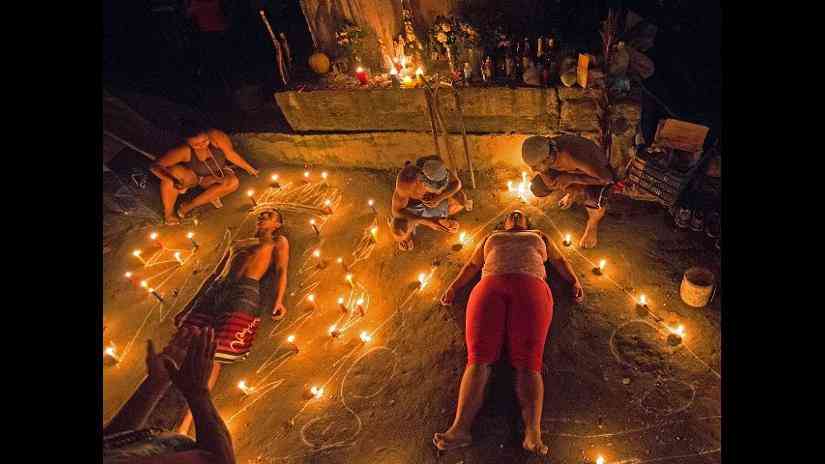
In this religion, magic and divination are practiced, magic or witchcraft are a series of different rituals that are performed through and through which it is intended to win the favor or hand of the orichas. Among these rituals, the sacrifices of innocent animals stand out and other offerings that are called "ebbos", and others that are oriented to do harm, called "bilongs" that are curses with a purpose towards something or someone.
Guessing on its part in santeria, 3 types of divinatory systems are used:
- The Ifa table, of which a babalawo is commissioned and uses okpele and ikines.
- The oracle of the diloggún, which is made by a babalocha or iyalocha who are consecrated in saint, with a hand of snails
- The oracle of Biagué, in which the orichas or saints reveal hidden things, the future or the future, and advise on how to behave in the coming times.
Why is magic or witchcraft generally unacceptable and forbidden by the Catholic church?
All the practices of magic or witchcraft through which it is intended to tame the powers that are hidden to put them at their own service and obtain a supernatural power over the projimo, even to influence health, are seriously contrary and wrong to Christianity. All these practices are condemnable when accompanied by an intention to harm another or resort to intervention by demons.
Divination is also a practice contrary to the first commandment of God's law, according to the Bible "All forms of divination must be rejected since they are, recourse to Satan or demons, evocation of the dead, and other practices that are mistakenly supposed to 'reveal' the future", the consultation of astrology, horoscopes, chiromancy, interpretation of luck.
Jesus Christ is absent in the santeria, the Bible says that: "There is only one God and also one mediator between God and men, Christ Jesus, man too, who gave himself as a ransom for all" and of Christ says "There is no other name given to men in heaven, through which we can save ourselves"; the Lord himself says "I am the Way, the truth and the Life, no one goes to the father but for me" and in santeria the saving mediation of Christ fades, giving rise in confidence to the orichas as mediators of absolute salvation.

